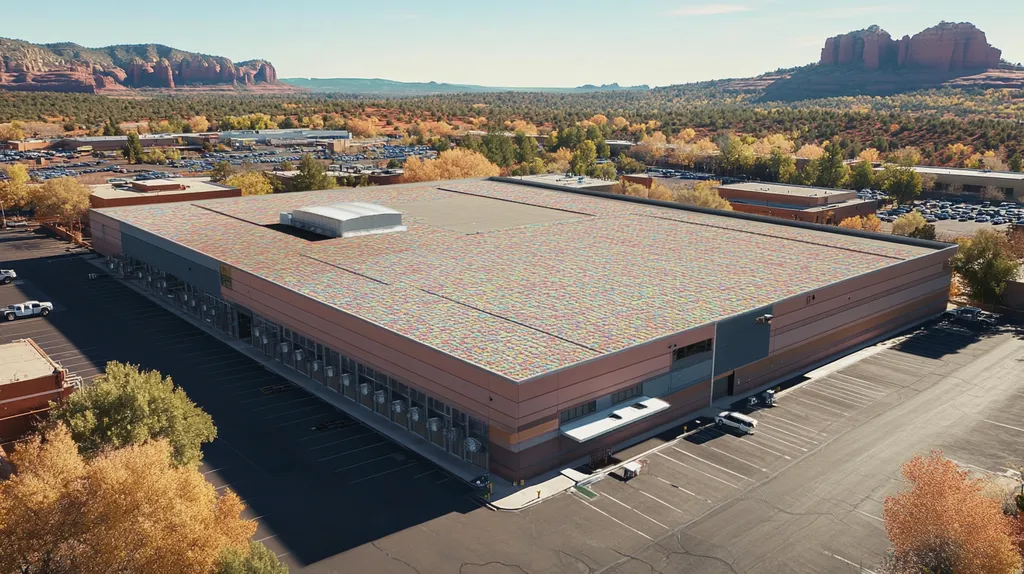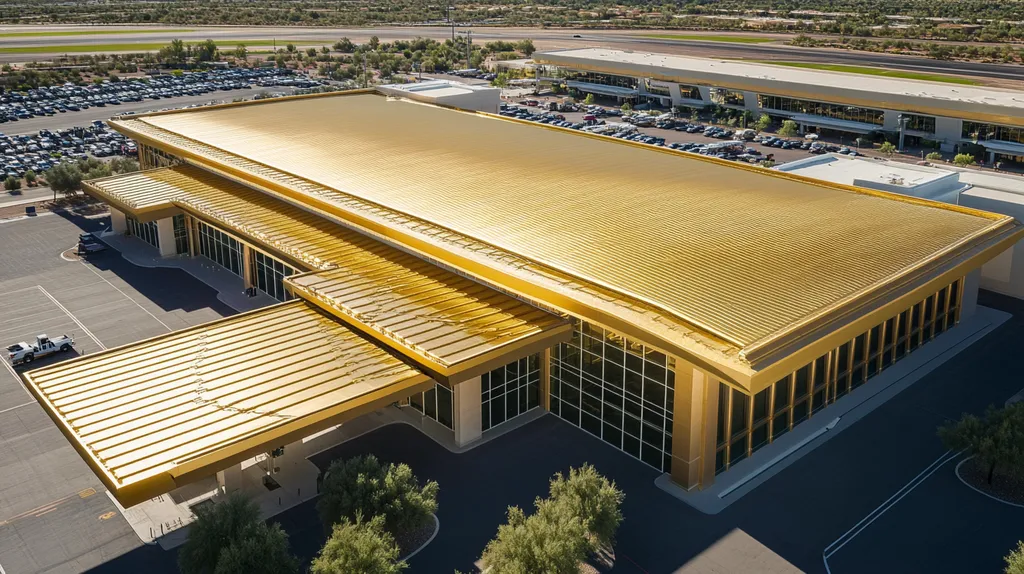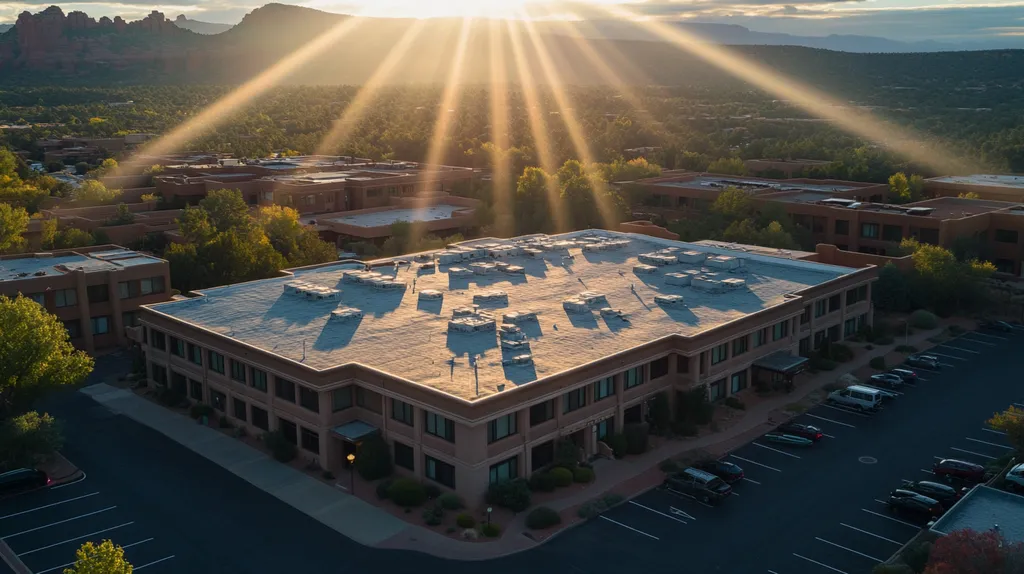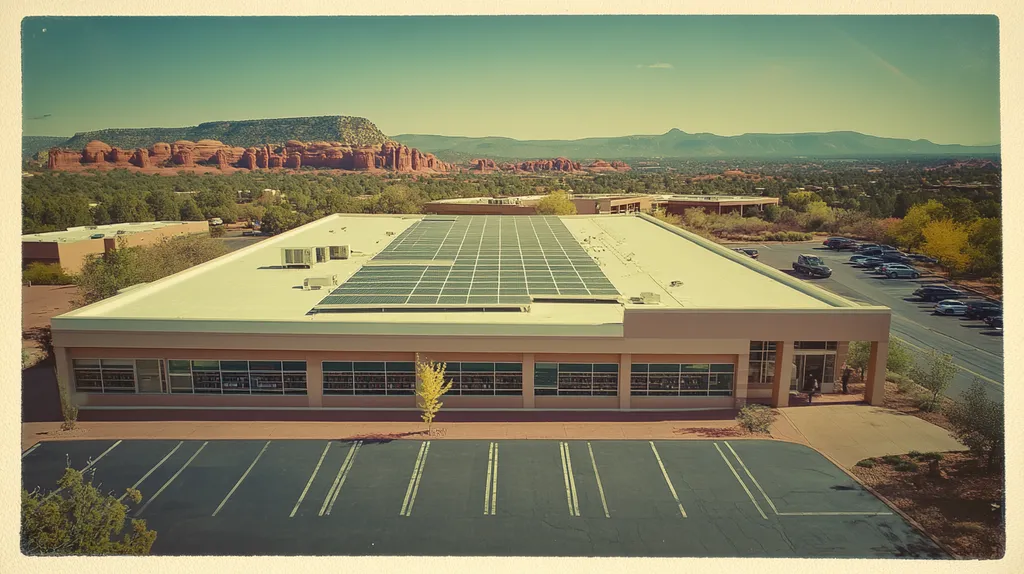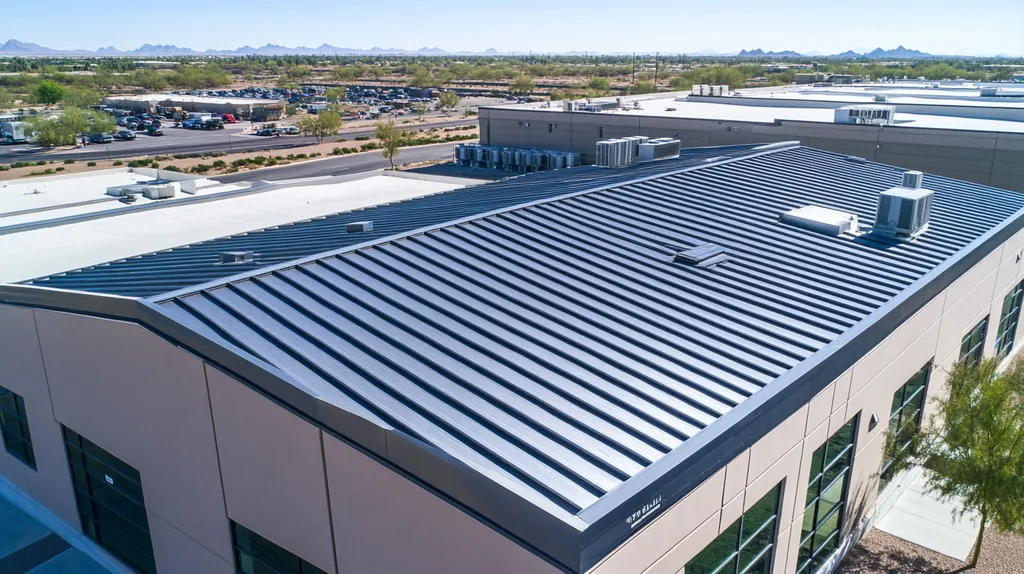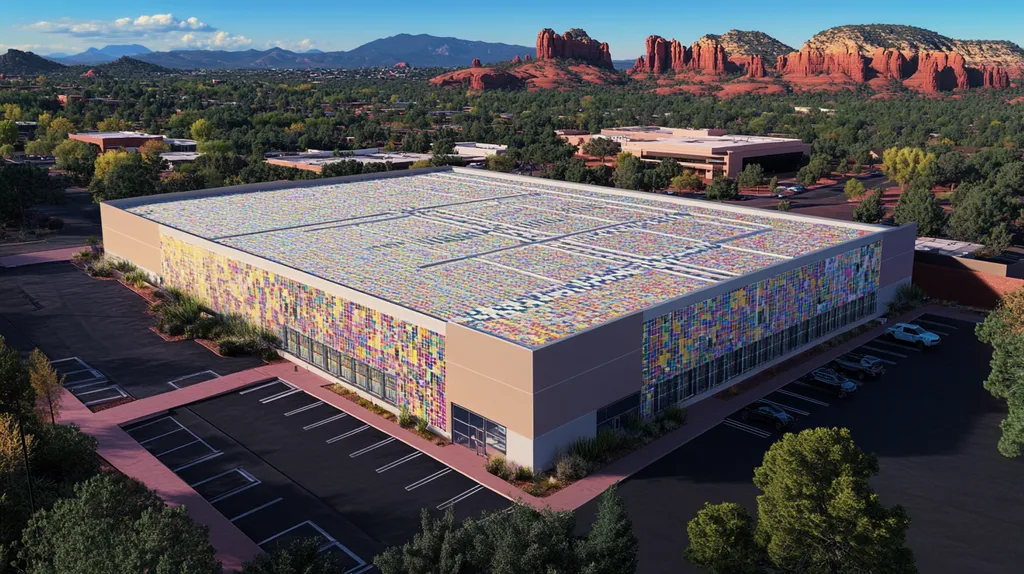Commercial roof replacements represent one of the largest capital expenses a property owner will face, with costs routinely ranging from $250,000 to over $1 million. Yet studies show that poor financing decisions increase total project costs by an average of 40%.
Understanding today’s diverse financing landscape – from traditional bank loans to specialized roofing programs and government incentives – has become crucial for protecting both property value and operating budgets.
This comprehensive guide examines the fundamental concepts, key components, and proven strategies for securing optimal commercial roof financing while maximizing long-term return on investment.
SECTION 1: FUNDAMENTAL CONCEPTS
Commercial roofing projects represent significant capital investments that can impact a property’s financial health for decades. With average commercial roof replacements ranging from $250,000 to over $1 million, choosing the right financing approach is critical. Understanding core financing concepts helps property owners avoid costly mistakes while maximizing both short-term affordability and long-term return on investment.
Understanding the Financial Lifecycle of Commercial Roofing Projects
The financial impact of a commercial roof extends far beyond the initial installation costs. Smart planning requires examining the complete financial lifecycle, from initial capital outlay through ongoing maintenance and eventual replacement.
Installation represents only about 40% of a roof’s total lifetime cost. Energy efficiency improvements, preventive maintenance programs, and warranty considerations all factor into the complete financial picture.
Tax implications play a major role in lifecycle costs. Recent changes in depreciation rules allow commercial roof expenses to be deducted more quickly, improving cash flow for many property owners.
Understanding lifecycle costs helps owners make strategic choices between paying more upfront for longer-lasting materials versus accepting higher maintenance costs with basic systems.
Key Drivers Influencing Financing Needs and Decisions
The scope and urgency of the roofing project significantly impact financing requirements. Emergency repairs often necessitate faster funding at higher costs, while planned replacements allow for more strategic financing approaches.
Property type and use directly affect both lender risk assessment and available funding options. Multi-tenant retail properties may qualify for different financing terms than single-tenant industrial buildings.
Local climate and weather patterns influence material choices and project timing, which in turn affect financing needs. Regions with extreme weather may require more robust and costly roofing systems.
The property’s overall financial health, including occupancy rates and revenue stability, shapes lender confidence and available terms.
Overview of Lender Types and Financing Structures
Commercial property owners can access multiple financing pathways for roofing projects. The most common options include traditional bank loans, specialized construction loans, and manufacturer financing programs.
Home equity loans offer fixed interest rates but put the property at risk, while personal loans provide quick funding but may carry higher rates. Roofing company financing can offer convenient payment plans directly through contractors. (source: NerdWallet)
Government-backed programs through the Small Business Administration (SBA) can provide favorable terms for qualified commercial properties, particularly for energy-efficient upgrades.
Equipment leasing structures allow costs to be spread across multiple budget cycles, though total financing costs may be higher than conventional loans.
Property owners should evaluate each option’s impact on cash flow, tax position, and balance sheet before making a final selection.
SECTION 2: SYSTEM COMPONENTS
With commercial roof replacements routinely costing $250,000 to over $1 million, selecting the right financing approach can make or break a project’s success. Every component of the financing system must work in harmony – from the initial funding instruments to the final documentation. Understanding these interconnected elements helps property owners navigate the complexities while maintaining their budget and timeline.
Principal Financial Instruments for Roofing Projects
Commercial roofing projects can be funded through several primary financial instruments. Traditional commercial mortgages and construction loans offer competitive rates but require extensive underwriting and collateral.
Equipment financing allows the roof system itself to serve as collateral, potentially offering more flexible terms than conventional loans. This approach can preserve working capital while matching payment terms to the roof’s expected lifespan.
Property Assessed Clean Energy (PACE) financing ties repayment to property tax assessments, offering longer terms and competitive rates for energy-efficient roofing systems. This option can be particularly attractive for older buildings requiring comprehensive upgrades.
Many property owners combine multiple instruments to create optimal funding structures. For example, using equipment financing for the roofing system while leveraging a line of credit for associated repairs and improvements.
Roles of Contractors, Lenders, and Third-Party Financiers
Roofing contractors serve as critical partners in the financing process by providing detailed scope documentation and cost breakdowns. Their expertise helps property owners develop accurate budgets and identify potential cost savings.
Traditional lenders evaluate project viability through both property and borrower assessment. They examine factors like building condition, tenant stability, and projected energy savings to determine loan terms.
Specialized roofing finance companies bridge gaps between contractors and traditional lenders. They often provide faster approvals and more flexible terms, though typically at higher interest rates.
Material manufacturers frequently offer direct financing programs that can complement or replace traditional lending. These programs may include extended warranties and maintenance agreements as part of the financing package.
Essential Documentation and Approval Processes
Successful financing requires comprehensive documentation starting with detailed project specifications. This includes engineering reports, energy analysis, and contractor qualifications.
Your credit score, property value, and current equity position significantly influence available financing options and terms. Home equity loans offer fixed rates but require collateral, while personal loans provide faster funding at higher rates. (source: NerdWallet)
Environmental compliance documentation becomes increasingly important as more jurisdictions adopt green building standards. Property owners must verify that proposed roofing systems meet current and anticipated regulations.
Insurance requirements add another layer of documentation complexity. Both contractors and property owners need appropriate coverage, with certificates naming all relevant parties as additional insureds.
Approval timelines vary significantly based on funding source and documentation completeness. Traditional lenders may require 30-60 days, while specialized programs can often close within 1-2 weeks.
SECTION 3: IMPLEMENTATION METHODS
Commercial roof financing decisions can make or break a property’s financial stability. With average project costs approaching $500,000 and 40% of businesses facing cash flow disruptions during major roofing work, choosing the right implementation strategy is critical. Modern financing approaches offer more flexibility than ever, but they also demand careful navigation of complex options, terms, and approval processes.
Step-by-Step Guide to Securing Commercial Roof Financing
Start by gathering detailed project specifications from qualified contractors. These should include material costs, labor estimates, timeline projections, and potential contingencies that could affect the final price.
Various financing options include business loans, SBA loans, leases, and specialized roofing grants. SBA loans offer lower interest rates and longer repayment terms but require extensive documentation and patience during approval. Operating and capital leases provide flexibility while offering potential tax benefits. (source: Rainville-Carlson)
Build a comprehensive financing package that includes recent financial statements, tax returns, business plans, and property documentation. Having these materials organized and ready streamlines the application process regardless of which funding source you pursue.
Consider timing carefully when implementing your financing strategy. Many lenders offer better terms during slower construction seasons, while emergency financing typically comes with premium rates.
Evaluating and Comparing Financing Offers
Create a standardized comparison matrix for all financing offers. Include obvious factors like interest rates and term length, but also examine prepayment penalties, balloon payments, and any maintenance requirements tied to financing.
Look beyond the monthly payment to understand total financing costs. Factor in origination fees, closing costs, and any required insurance or maintenance program expenses that may be bundled with the financing.
Evaluate how each financing option affects your property’s balance sheet and tax position. Some structures allow for immediate expense deduction while others require capitalization over many years.
Consider the flexibility of each offer to accommodate project changes or early payoff. The lowest rate isn’t always best if it comes with rigid terms that could prove costly later.
Navigating Application, Underwriting, and Closing Procedures
Begin the application process by designating a single point person to coordinate with lenders. This individual should understand both the technical aspects of the roofing project and your organization’s financial position.
Prepare for thorough underwriting review by having current property condition reports, maintenance records, and tenant information readily available. Lenders will scrutinize these materials to assess project risk.
Maintain proactive communication throughout the underwriting process. Quick responses to information requests and clarification questions can significantly reduce approval timelines.
Review all closing documents with both legal counsel and tax advisors. Pay special attention to any covenants or restrictions that could affect future property operations or refinancing options.
SECTION 4: MAINTENANCE REQUIREMENTS
Commercial roofing maintenance demands rigorous financial planning and oversight. With maintenance costs typically representing 25-40% of a roof’s total lifecycle expense, property owners who neglect these ongoing obligations often face catastrophic failures and emergency repairs costing 3-5 times more than preventive care. Understanding payment schedules, refinancing options, and dispute resolution becomes crucial for protecting both the roof investment and the property’s long-term value.
Ongoing Financial Obligations and Payment Schedules
The most common methods for financing ongoing maintenance include traditional bank loans with fixed terms, SBA loans offering government backing, commercial lines of credit providing flexibility, and specialized programs for energy-efficient upgrades. Payment schedules and approval times vary significantly based on the chosen financing structure. (source: Equity Roofs Blog)
Regular maintenance costs typically include quarterly inspections, annual membrane testing, and periodic repairs to flashings and drainage systems. Smart property owners budget 10-15 cents per square foot annually for these routine services.
Warranty compliance requirements add another layer of financial obligation. Most manufacturer warranties mandate specific maintenance intervals and documentation to maintain coverage.
Creating dedicated maintenance reserve accounts helps smooth out expense cycles. Monthly contributions of 2-3% of the original roof cost ensure funds are available when needed.
Managing Refinancing and Lease Renewal Options
Property owners should review refinancing opportunities every 3-5 years as market conditions and roof conditions evolve. Well-maintained roofs often qualify for better terms and longer amortization periods.
Lease structures significantly impact maintenance funding strategies. Triple net leases may allow direct pass-through of maintenance costs, while gross leases require careful budgeting to cover these expenses.
Energy efficiency improvements can unlock additional financing options through green building programs. These often offer lower interest rates and extended terms for qualifying upgrades.
Documentation of maintenance history becomes crucial during refinancing. Detailed service records and inspection reports demonstrate responsible asset management to potential lenders.
Addressing Delinquencies and Financial Disputes
Clear communication channels between property owners, maintenance providers, and financial institutions help prevent payment disputes. Establishing written protocols for service verification and payment processing reduces misunderstandings.
When payment issues arise, early intervention prevents minor delays from becoming major problems. Most servicers offer short-term payment plans for temporary cash flow challenges.
Warranty claims require careful documentation and prompt filing. Missing submission deadlines or failing to follow prescribed procedures can void coverage for otherwise valid claims.
Professional mediation services specializing in commercial construction disputes can resolve conflicts more quickly and cost-effectively than litigation. Many maintenance contracts now include mandatory mediation clauses.
SECTION 5: PERFORMANCE METRICS
Tracking performance metrics can mean the difference between a successful commercial roofing project and a financial disaster. With projects routinely costing $500,000 or more, even small oversights in monitoring costs, interest rates, or compliance requirements can balloon into major financial setbacks. Yet studies show that over 65% of property owners lack structured systems for evaluating their roofing investments’ ongoing performance.
Assessing Cost-Benefit and Return on Investment
Effective cost-benefit analysis requires examining both immediate and long-term financial impacts. Initial material and installation costs typically represent only 40-50% of total lifetime expenses.
Energy efficiency improvements from modern roofing systems can reduce HVAC costs by 15-30% annually. These savings must be factored into ROI calculations alongside traditional metrics like installation costs and warranty terms.
Property value impacts deserve careful consideration. High-performance roofing systems can increase building value by 5-7%, while poorly performing systems may decrease value by up to 15%.
Regular performance reviews help identify potential issues before they become costly problems. Monthly monitoring of utility bills and quarterly inspection reports provide early warning signs of declining roof performance.
Tracking Interest Rates, Fees, and Total Cost of Capital
Bank financing represents the most common funding path for commercial roofing projects, with terms and rates varying significantly based on borrower creditworthiness. Smart property owners compare multiple lenders to secure optimal financing packages. (source: Maxwell Roofing)
Beyond basic interest rates, property owners must track origination fees, processing charges, and prepayment penalties. These additional costs can add 2-5% to the total project expense.
Insurance requirements tied to financing agreements need careful evaluation. Premium increases for enhanced coverage can significantly impact the total cost of capital.
Creating detailed cost tracking spreadsheets helps identify potential savings opportunities. Monthly review of all financing-related expenses ensures no costs slip through the cracks.
Measuring Compliance with Loan Covenants and Terms
Loan covenants often include specific maintenance requirements and performance benchmarks. Missing these targets can trigger penalty rates or even loan acceleration.
Documentation plays a crucial role in demonstrating compliance. Maintaining organized records of inspections, repairs, and financial metrics protects against potential covenant violations.
Regular covenant reviews with financial advisors help identify potential issues early. Quarterly assessments of key performance indicators ensure continued compliance with all loan terms.
Building strong relationships with lenders through consistent compliance reporting can lead to more favorable terms on future projects. Many lenders offer rate reductions for borrowers with proven track records.
SECTION 6: OPTIMIZATION STRATEGIES
With commercial roof replacements frequently exceeding $500,000, optimizing financing strategies can mean the difference between project success and financial strain. Modern optimization approaches can reduce total costs by 25-40% through strategic use of incentives, energy efficiency programs, and careful long-term planning. Yet studies show that over 70% of property owners leave significant money on the table by failing to fully leverage available financial tools and programs.
Leveraging Grants, Incentives, and Tax Advantages
Federal tax incentives can offset up to 30% of qualified roofing improvement costs through programs like the Energy-Efficient Commercial Buildings Deduction. Smart property owners combine these with state and local incentives to maximize savings.
Utility companies frequently offer rebates and incentives for energy-efficient roofing upgrades. These programs can reduce upfront costs by 10-25% while delivering ongoing operational savings.
Historic preservation grants provide additional funding opportunities for qualified buildings. These programs often cover 20-50% of roofing costs when utilizing appropriate materials and methods.
Timing grant applications and tax strategies properly ensures maximum benefit capture. Many programs have specific submission windows and documentation requirements that demand careful planning.
Integrating Energy Efficiency and Sustainability into Financing
Modern energy-efficient roofing systems can reduce building cooling costs by 15-30% annually. These savings should be factored into financing decisions as they directly impact project payback periods.
Green building certification programs like LEED offer additional financial incentives. Many jurisdictions provide tax abatements or expedited permitting for projects meeting sustainability standards.
Performance contracting allows property owners to finance roof improvements through guaranteed energy savings. This approach can make projects cash-flow positive from day one.
Solar integration capabilities should be considered even if immediate installation isn’t planned. Future-proofing roof designs can increase property value while preserving financing options for later energy improvements.
Best Practices for Long-Term Financial Planning and Risk Mitigation
Creating dedicated roof replacement reserve funds helps smooth out major capital expenditures. Monthly contributions of 2-3% of estimated replacement costs ensure adequate funding when needed.
Strategic maintenance planning extends roof life while preserving warranty coverage. Well-maintained roofs typically last 25% longer than those receiving only reactive repairs.
Insurance premium reductions often accompany modern roofing system installations. Properties with documented maintenance programs and updated systems frequently qualify for preferred rates.
Regular financial stress testing helps identify potential risks before they become critical. Quarterly reviews of reserve funding, maintenance budgets, and financing terms ensure continued program viability.
The Bottom Line
With commercial roof replacements routinely exceeding $500,000, the stakes for proper financing have never been higher. Studies show that poor financing decisions increase total project costs by an average of 40%.
Today’s property owners must navigate an increasingly complex landscape of traditional loans, specialized programs, and government incentives to find optimal funding solutions.
Success requires careful evaluation of financing options, thorough documentation, and strategic planning for both immediate installation and long-term maintenance costs.
By leveraging available incentives, maintaining strong compliance practices, and implementing proper performance tracking, property owners can reduce total roofing costs by 25-40% while maximizing their return on investment.
The future belongs to those who take a proactive, systematic approach to commercial roof financing rather than reactive, emergency-driven decisions.
FREQUENTLY ASKED QUESTIONS
Q. What are the fundamental concepts of financing a commercial roof?
A. Financing a commercial roof involves understanding the lifecycle costs, including installation, maintenance, and potential tax benefits. It’s crucial to evaluate the total financial impact rather than just upfront costs to avoid future expenses. By grasping these concepts, property owners can make informed, long-term decisions that maximize their investment.
Q. What are the key financial instruments for an industrial roof?
A. Various financial instruments can fund an industrial roof, including traditional loans, construction loans, and equipment financing. Each option has its pros and cons regarding terms and collateral requirements. By combining different instruments, property owners can create a customized funding structure that meets their specific project needs.
Q. How can I implement commercial roof financing effectively?
A. Begin by gathering detailed project specifications and exploring various financing options. It’s important to create a comprehensive financing package that includes financial statements and property documentation. Pay attention to timing and compare different offers to ensure you select the best terms for your situation, ensuring a manageable implementation.
Q. What ongoing maintenance costs should be considered for commercial roofs?
A. Ongoing maintenance costs typically involve routine inspections, membrane testing, and necessary repairs. Property owners should budget around 10-15 cents per square foot annually to ensure their roof remains in good condition. Setting aside funds in a maintenance reserve can help cover these expenses without impacting immediate cash flow.
Q. How can property owners track performance metrics for a commercial roof?
A. Regularly monitoring performance metrics, such as utility bills and inspection reports, is crucial to spot issues early. Create a detailed cost tracking spreadsheet to assess expenses against your budget and review performance indicators quarterly. This diligence may help you identify potential savings and ensure your investment remains sound over time.
Q. What optimization strategies can reduce costs for a new commercial roof?
A. Utilizing grants, tax incentives, and energy efficiency programs can significantly lower your overall costs. Staying informed about available financial tools allows property owners to effectively leverage these opportunities. Implementing a long-term financial plan and involving sustainable practices will contribute to savings and enhance return on investment.
Q. What are the tax implications of financing a new commercial roof?
A. Tax implications play a significant role in commercial roofing projects. Recent changes allow for quicker deductions of roof expenses, improving cash flow for property owners. Understanding these tax benefits can help you maximize your investment and mitigate the immediate financial impacts of roof financing.

